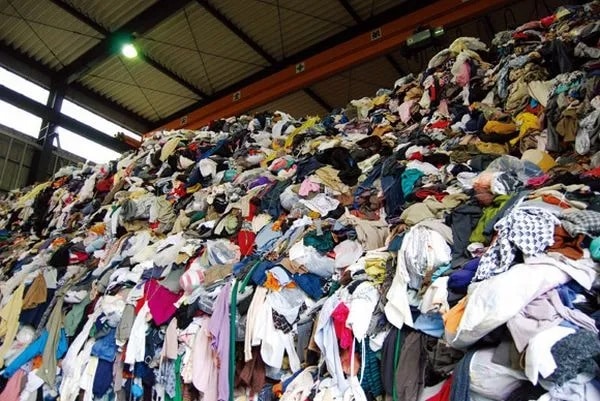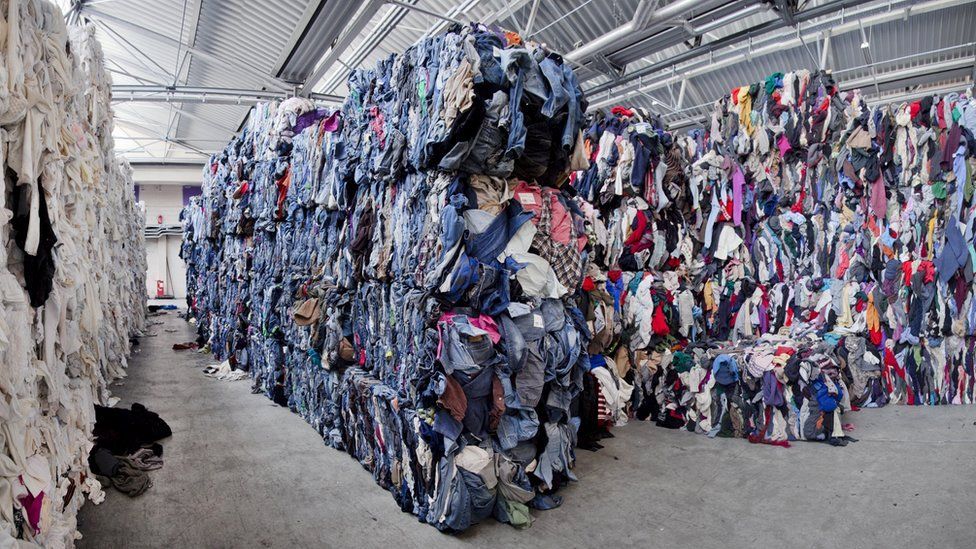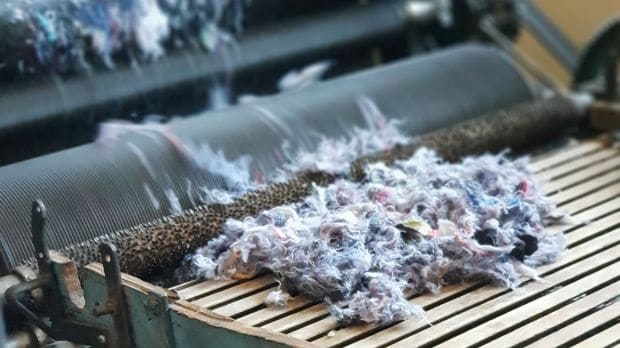There are over 2 million tons of textiles recycled each year. They are an important part of our lives. They are in our clothes, in the furniture we sit on, and in the cars we drive. Textile recycling is a process that saves these materials from landfills to be reused by consumers or converted into new textiles. This blog post will answer questions about textile recycling, where to find a place that takes them, and how it works. I will also share my experience with the textile recycling near me.
Map of Textile Recycling Near Me – Locate a Recycler
For “Textile Recycling Near Me”, see the map below…
What Are Textiles?
Textiles are defined as any materials made from natural or synthetic fibers that are used to make clothing, furniture, matresses, and other objects. The most common textile materials are cotton, wool, silk, linen, and rayon.
The Rise of Textile Recycling
The frequency of textile recycling has significantly increased in recent years as a response to the growing concern over textile waste and its environmental impact. Textile municipal solid waste, including discarded clothing and other textiles, has become a pressing issue.
Many individuals and communities are now actively participating in textile recycling programs and initiatives to mitigate this problem. Thrift stores and local donation centers play a pivotal role in this process, as they serve as collection points for unwanted clothing and donated textiles.

Textile recycling programs encourage the responsible disposal of post-consumer textiles, promoting textile reuse over the traditional method of discarding. These efforts not only divert textile waste from landfills but also extend the lifespan of clothing and other textiles.
Furthermore, many thrift stores and donation centers collaborate with local animal shelters, providing them with donated textiles to benefit both the environment and the welfare of animals in need. In this way, finding textile recycling solutions has become more accessible and frequent, fostering a culture of sustainability and responsible consumption.
Where Can I Recycle Textiles Near Me?
There are several places where you can recycle textiles near me. For example, you can take them to a textile recycling firm, drop them off at a donation center, or leave them in an outdoor collection bin. If you take them to a local recycling center there is often a green bin for collection. In addition, some communities have curbside pickup for recyclable materials, including textiles.
How Does Textile Recycling Near Me Work?
Recycled textiles are made into new products that consumers can use. They are also made into new materials that can be used by manufacturers. Recycling firms often buy used clothes from charities and sell them to companies that make recycled products.
There are three types of textile recycling: reuse, recycle, and compost. Reuse is the process of using textiles for the same purpose they were originally intended. Recycling is the process of breaking down textiles into their component parts so they can be used to make new textiles. Finally, Composting is the process of breaking down textiles into organic matter that can be used as a soil amendment or mulch.
Most recycled textiles are made from cotton because it is the most common textile material. Recycled cotton textiles can be made into new clothing, furniture, and other objects. Recycling firms often buy used clothes from charities and sell them to companies that make recycled products.

How to Drop Off
In most instances, a textile recycler would prefer you bag all your items together. They also would prefer clean materials, but really they will take your items in any condition.
How Does Textile Recycling Benefit the Environment?
Textile recycling benefits the environment in several ways. It reduces the amount of waste going to landfills, saves resources that would otherwise be used to make new textiles, and reduces the amount of energy needed to manufacture new textiles.
Textile recycling is an essential part of waste reduction. It keeps textile materials from going to landfills where they can take up space and produce methane gas. Methane gas is a potent greenhouse gas that contributes to climate change. The EPA estimates that textiles make up 5% of all landfills in the US.
Textile recycling also saves resources. Cotton is a natural fiber that requires less water and pesticides than synthetic fibers. Recycling old cotton clothes into new products saves the need for additional irrigation and chemical treatments.
Recycled textiles also save energy. However, producing new textiles from virgin materials requires much more energy than recycling existing materials. Manufacturing recycled fabrics also creates a lot of waste, but making new textiles from virgin materials produces even more waste.

What is The Process for Recycling Textiles?
First, the textiles are sorted into different types of materials. For example, cotton, wool, silk, linen, and rayon can all be recycled separately. The textiles are then cleaned and chopped into small pieces. The small pieces are then heated to create a new fiber that can be used to make new textiles.
The process for recycling textiles is similar to the process for recycling paper. Paper is made from cellulose, which is a natural material. Cellulose is also the main component of cotton. Recycling old paper into new products saves the need for additional irrigation and chemical treatments.
Recycled textiles are made into new products that consumers can use. They are also made into new textiles that can be used by manufacturers. Recycling firms often buy used clothes from charities and sell them to companies that make recycled products. Composting, however, is the process of breaking down organic matter into a soil amendment or mulch. Organic matter includes materials like food scraps, paper, cardboard, wood chips, and textile materials.

Do Landfills Accept Textiles?
Yes, they do accept textiles, but taking them to a landfill should be your last resort. These materials take up valuable space and take a long time to decompose. Remember textiles are more than just a shirt made of cotton. There synthetics, dyes, and chemicals all interwoven in the process. This makes the material take much longer to deteriorate.
Are There Fees Associated With Donating or Recycling?
No. Recycling textiles should be free no matter where you go. If you find someone who charges for taking recycled clothes or textiles, look for other alternatives. The only exception where you might pay for recycling them is a junk removal company. However, they are charging for the service of coming to you and taking your stuff, not for the actual recycling of the material.

Alternative Options to Reuse Textiles Yourself
You can reuse and recycle textiles yourself by donating them to a charity or selling them. Selling old clothes is an easy way to make some extra money. You could also donate old clothing so it can be given away for free, which will benefit people with lower incomes who cannot afford new clothes.
If you do not want to use your textiles again, then there are several alternatives that will still reduce the impact on landfills and save resources. Many charities accept used clothing donations that they sell in thrift shops for fundraising purposes. Thrift stores often give discounts on purchases of recycled items like this because their original owners already paid full price when purchasing them in retail stores. Stores like H&M and Patagonia accept their own clothing back in order to collect and recycle the material.
You can also recycle old clothes by turning them into rags. Rags are used to clean surfaces and tools. They can also be used as insulation in specific applications. Recycling textiles like this prevents them from ending up in a landfill and saves resources that would otherwise be used to make new rags.

What Are Products That Use Recycled Textiles?
There are a number of products that use recycled textiles. Some examples include:
- Reusable shopping bags made from recycled cotton
- Woolen blankets and throws
- Pillows, mattresses, and upholstery made with recycled wool or cotton
- Towels and napkins made with recycled cotton
- Clothing made with recycled materials
It is important to remember that not all recycled textiles are used in clothing. Recycled textiles can also be used in insulation, building materials, car seat covers, and a variety of other products. Buying products that contain recycled materials helps reduce the amount of waste produced each year. It also supports companies that are working to make a difference in the environment.
Textile Recycling Near Me – Conclusion
In conclusion, recycling textiles is crucial because it saves resources and prevents waste from ending up in landfills. There are a number of ways to recycle textiles, and there are a number of products that use recycled materials. Buying products that contain recycled materials helps reduce the amount of waste produced each year. This is what I have learned from the places that do textile recycling near me.
FAQs About Textile Recycling Near Me
What are textile donations, and how do they differ from recycling?
Textile donations involve giving away gently used clothes, shoes, and other textiles to charities or organizations that can distribute them to people in need. Recycling focuses on repurposing textiles, which might not be suitable for reuse.
How can I find textile recycling facilities or drop-off locations near me?
You can easily find textile recycling options near you by using online resources such as recycling locator websites, and apps, or by contacting local waste management authorities.
What happens to post-consumer textiles after they’re collected?
Post-consumer textiles collected for recycling are typically sorted and processed. They may be refurbished and resold as second-hand clothing, used for industrial purposes, or turned into materials for making new textiles or other products.
How can I encourage textile recycling in my community?
A10: You can promote textile recycling by educating others about its importance, organizing clothing drives, and supporting local recycling initiatives. Sharing information and resources on social media can also raise awareness about textile recycling near you.
What happens to textiles after they are recycled?
Recycled textiles can be turned into various products, including new clothing, insulation, paper, and cleaning rags. Some are repurposed as raw materials for other industries.
